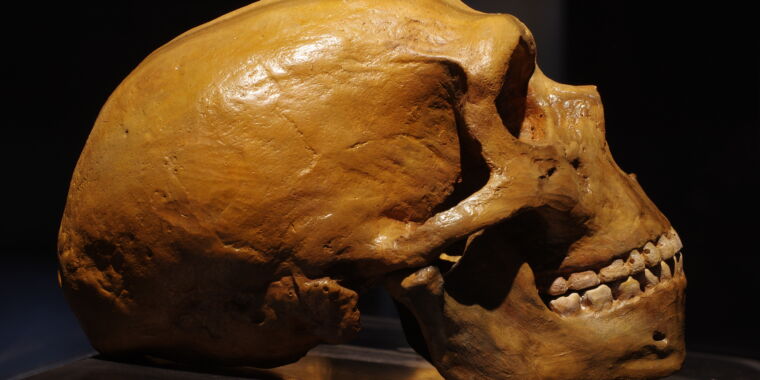The basic outlines of modern human interaction with Neanderthals are now well established. Contact occurred about 60,000 years ago, when modern humans began their great expansion out of Africa. Although humans adopted some Neanderthal DNA through interbreeding, the Neanderthal population, which was always fairly small, was swept away by successive waves of newcomers.
However, there are some aspects of this big-picture view that don’t quite fit with the data. It nicely explains the fact that Neanderthal gene sequences are more common in populations outside of Africa, but it doesn’t explain the fact that all of the African populations we looked at have DNA that matches Neanderthal DNA.
The study published Thursday argues that many of the matches arose because early modern human populations also left Africa and interbred with Neanderthals. But in this case, the result was that modern human DNA was introduced into the Neanderthal population. The study shows that this DNA accounts for much of the genetic diversity of Neanderthals, suggesting that their population was even smaller than previously estimated.
I left Africa early.
This study is not the first to suggest that modern humans and their genes encountered Neanderthals well before the great human expansion out of Africa. Key to understanding this is the Neanderthal genome found in the Altai region of Siberia, which is about 120,000 years old. That genome has some regions that match the human genome very closely but are not present in the Denisovan lineage.
One explanation for this is that these were pieces of Neanderthal DNA, brought over by a later population that expanded out of Africa. The problem with this view is that most of these sequences are also found in African populations. So researchers have advanced the idea that the ancestral population of modern humans left Africa about 200,000 years ago, and that some of their DNA was retained by Neanderthals in Siberia. This is consistent with fossil finds that show anatomically modern humans were in the Middle East around the same time.
But there’s another explanation: Some of the populations that expanded out of Africa 60,000 years ago picked up Neanderthal DNA and returned to Africa with it, resulting in traces of Neanderthal DNA remaining in African populations.
To make sense of all this, the Princeton University-based research team took advantage of the fact that we now have a much larger set of completed human genome sequences (around 2,000 of them) and focused on Neanderthal DNA found in Africans.
This study was based on a simple hypothesis: all our studies of Neanderthal DNA indicate that their population was relatively small and therefore had less genetic diversity than modern humans. If this was the case, the addition of modern human DNA to the Neanderthal population should have increased its genetic diversity. If this was the case, the regions of “Neanderthal” DNA found in African populations should contain some of the more diverse regions of the Neanderthal genome.


